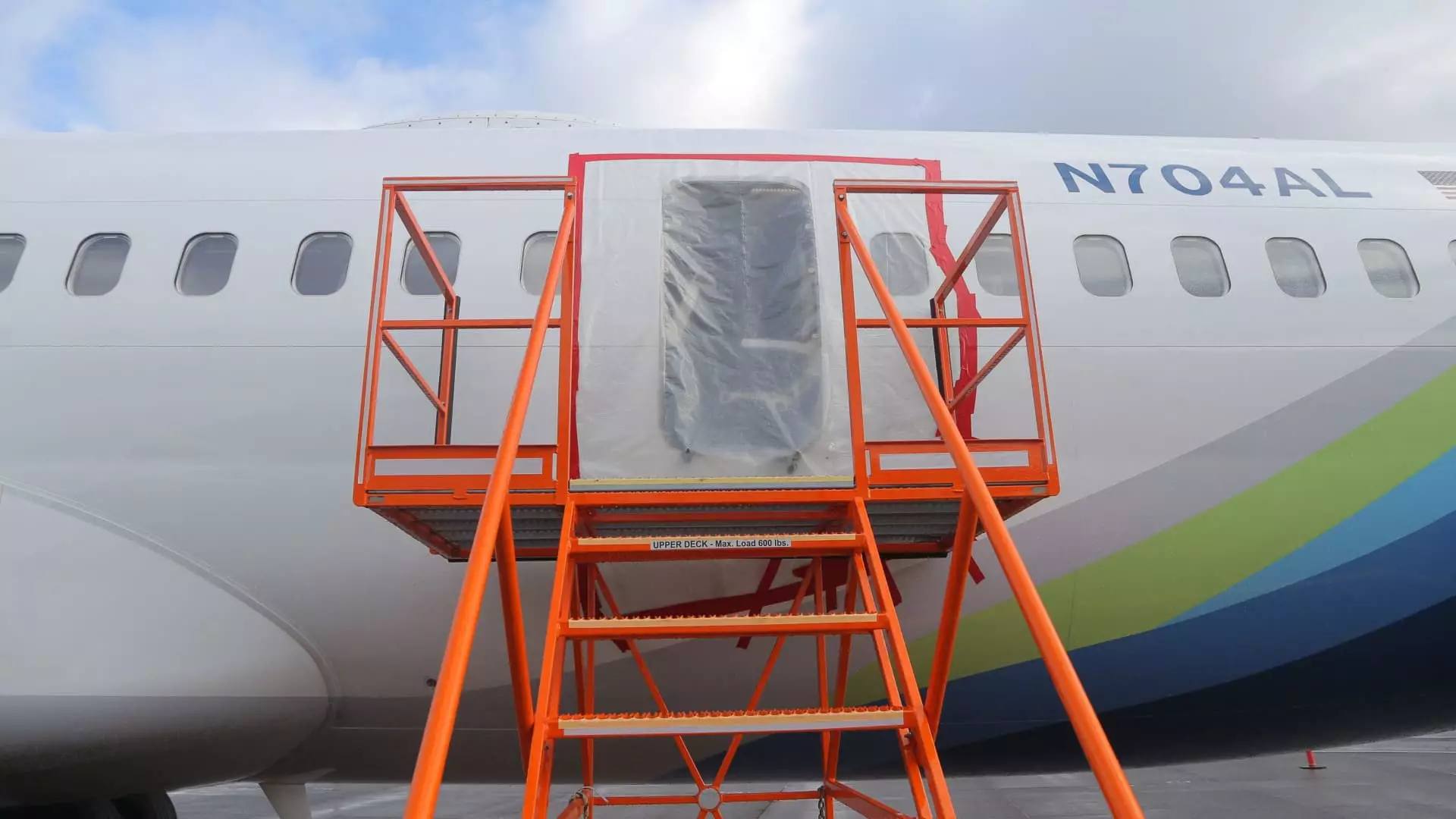Boeing has recently provided airlines with instructions on how to conduct inspections on their 737 Max 9 jetliners. This development marks a significant step towards resolving the grounding of these planes. The Federal Aviation Administration (FAA) ordered the grounding of dozens of these jets following an incident involving a blown door plug on an Alaska Airlines flight. Although no serious injuries were reported, this incident has prompted the need for thorough inspections and safety measures to ensure the well-being of passengers and crew. In this article, we will delve into the details of these inspections and the impact they will have on airlines.
During Alaska Airlines Flight 1282, bound for Ontario, California, a door plug blew open while the aircraft was at 16,000 feet. This forced the plane to return to Portland, Oregon, shortly after takeoff. Fortunately, there were no major injuries as a result of this incident. However, it raised concerns about the safety of the 737 Max 9 jetliners, leading to the FAA’s decision to ground these planes. The specific cause of the blowout has not been disclosed, but it has raised alarm bells, warranting thorough inspections of all affected aircraft.
Boeing, in coordination with the FAA, has developed comprehensive and technical instructions for the required inspections. These instructions have been conveyed to operators through a multi-operator message. The inspections will focus on both left and right cabin door exit plugs, door components, and fasteners. This extensive examination aims to identify any potential issues that could compromise the safety and functionality of these planes. The exact duration of these inspections has not been specified, but it is crucial for operators to prioritize safety and complete them diligently.
The grounding of the 737 Max 9 jetliners affects a significant number of aircraft worldwide. With over 200 of these planes in fleets globally, airlines have been compelled to adjust their operations accordingly. United Airlines, for instance, has a fleet of 79 737 Max 9s, while Alaska Airlines has 65. The remaining aircraft are divided among other airlines. This grounding has undoubtedly disrupted airlines’ schedules and may lead to further logistical challenges as they strive to meet passenger demand with alternative aircraft.
The FAA has emphasized its commitment to ensuring passenger safety throughout this ordeal. The agency states that the grounding of the Boeing 737 Max 9 aircraft will remain in effect until operators successfully complete the enhanced inspections. By placing safety as a top priority, the FAA is demonstrating its dedication to maintaining the highest standards of aviation security. As the inspections progress, it is crucial for both Boeing and the airlines to collaborate closely with regulatory authorities to address any concerns effectively.
The recent instructions provided by Boeing for inspecting their 737 Max 9 jetliners mark a significant development in the effort to lift the grounding of these planes. The inspections, focused on cabin door exit plugs, door components, and fasteners, are designed to ensure the safety and overall integrity of these aircraft. As airlines work diligently to complete these inspections, passenger safety remains the highest priority. Through close collaboration between Boeing, airlines, and regulatory authorities, the aviation industry is committed to resolving this issue and restoring confidence in the safety of the Boeing 737 Max 9 jetliners.


Leave a Reply